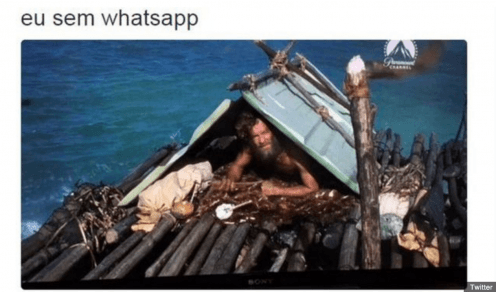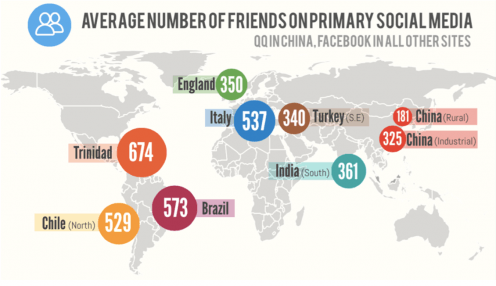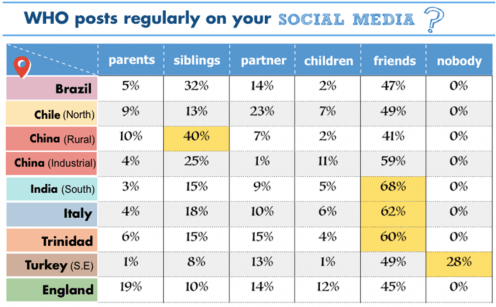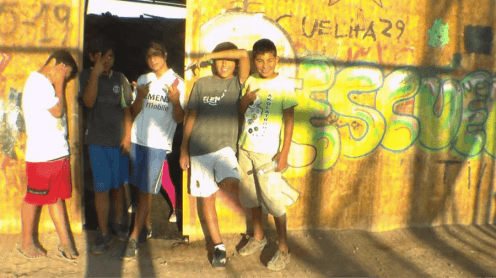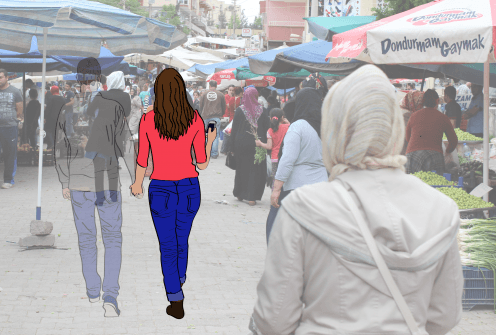
An education in anthropology encourages us to look beyond cultural assumptions.
In the days following the results of the US presidential election, there has allegedly been a wave of racist attacks and hate crime across the States against Muslims, hispanic Americans, black people, ethnic minorities, and the LGBT community. At the root of such behaviour is deep cultural ignorance and education is one of the most powerful weapons we have against intolerance and fear of the ‘other’. The humanistic sensibilities that an education in anthropology fosters can be paradigm-changing. It seems apparent that a commitment to an engaged public anthropology has never mattered more, or been more feasible in this digitally connected age. Many anthropologists, including the Why We Post team, feel the moral and political imperative to bring anthropology to a wider audience than was previously possible with traditional modes of research dissemination. But as anthropologists situated within today’s hyper-competitive academic job market, how can we navigate the often tenuous balance between public and academic output?
How can we manage to produce high-quality public content at the same time as managing the responsibilities that come with being professional anthropologists working within the demands of the academic job market? This was a question put to me by Alisse Waterston, the president of the American Anthropological Association, after a talk I gave at the IUAES in Dubrovnik back in May. The theme of IUAES this year was ‘world anthropologies and privatisation of knowledge: engaging anthropology in public’, yet my panel was the only one with the explicit theme of how to bring anthropology to the public. The panel convenors, Jenny Ingridsdotter and Kim Kallenberg from Södertörn University in Sweden, explained the difficult balancing act inherent in their academic lives: “In order to pursue an academic career we are encouraged to write peer reviewed articles and engage with research communities. Yet little time is left to engage socially and interactively with local communities or communicate important results to public spheres. As young scholars it might be even more complicated to legitimise designation of time to public output. Still we feel it is really important and at the core at what we do as ethnographers.”

The Why We Post course on FutureLearn runs three times per year.
I believe that there are several factors that enabled our team to successfully produce large amounts of public output at the same time as writing up their research, publishing, and applying for jobs (all of the 5 post docs have now secured academic employment). Firstly I think it’s important that public engagement shouldn’t be an afterthought to research, but like with Why We Post, should begin from a project’s inception if it is to be successful. Partly this is because the writing skills necessary for communicating to a general public take time to hone, and also because it’s important for researchers to understand early on in their work the kind of field material (video, photographic, textual) they need to record in order to produce engaging content that will appeal to non-anthropologists.
Given our topic of research is the uses and consequences of social media, our project was conceived as having a broad appeal from the outset; with selfies and memes we might be able to bring people to anthropology who otherwise might overlook it. Project leader Daniel Miller envisaged a spectrum of dissemination/engagement methods including open access books, an e-course, and a public-facing website, all of which was made possible by a generous ERC advanced grant which funded the project and has covered my salary as a public engagement fellow and research assistant. I was hired at the three-and-a-half-year mark when the team were in the process of writing up. Working with these talented researchers to produce our public content I saw how it was often difficult for them to juggle the academic and public output, even with the support of a team. The more conversations I had with them, the clearer it became: public engagement in anthropology is currently institutionally undervalued and needs greater recognition within the established modes of evaluation that researchers are subject to. I think that projects with more limited resources than ours would struggle to produce the same range of public output, despite the best intentions of individual researchers to reach beyond the ivory tower.

Can we draw people to anthropology through analysis of popular culture such as the selfie?
In addition to writing 11 open access books (aimed at both academics and lay readers, with jargon-free text and references kept to footnotes), the Why We Post team agree that producing visual and textual material for the online course was the most time-intensive of our initiatives, taking longer than expected. One of our researchers, Shriram Venkatraman believes that this was mainly down our high production values coupled with our lack of experience in creating such material – and a lack of existing models to follow. We were the first UCL course on FutureLearn and the first comparative anthropological online course of this scale. The sheer amount of material coming from our project also posed a challenge – how do you condense insights from a total of 135 months of ethnographic fieldwork across nine fieldsites into a concise course aimed at a general audience? The answer: a combination of Googledocs, tracked edits, miles of emails, and a lot of good will and humour. Support also came from UCL’s Digital Education team whose expertise in online learning was pivotal in developing a successful course.
Despite the time-intensive nature of scripting and filming course content, Jolynna Sinanan commented that the skills she gained were invaluable: “The time pressure was immense but the skills we learned in filming, writing, developing and translating content for the course were very valuable, especially when gaining public exposure for our research is becoming more important. We are also competing within an academic climate that values producing a high level of quality as well as quantity, so we need to display virtuosity as well as accessibility with our research outputs, from being able to write journal articles to making short films for YouTube.” The skills developed in public engagement can also benefit traditional academic output, as Xinyuan Wang explained: “producing the course actually helped my academic writing as in the course I needed to describe and discuss things in a straightforward and engaging way (which is actually more difficult in many ways than composing an academic paper). After working on the course, my own arguments actually became clearer and better constructed, which is definitely very helpful in my future writing and actually saved time rather than wasted time in the long-run.”
While the process of transforming research findings into public education was both challenging and rewarding, once the team’s contracts were nearing completion and they launched into job searches they faced a new challenge: the academic job market currently does not value online learning in the same way as offline learning. Dr Nell Haynes, our team member who conducted her fieldwork in Northern Chile explained: “The online course is not at all considered to be equal to teaching in-person courses, despite the fact that it actually took much much more time, revision, and creative thinking than preparation for a traditional lecture course. And while there has for some time been a strong movement by anthropologists to have administrations grant more weight (in tenure review and other institutionalised forms of evaluation) to public work, it certainly seems that search committees are often reproducing these very biases. Based on conversations with other job applicants this does seem to be a systemic trend.”
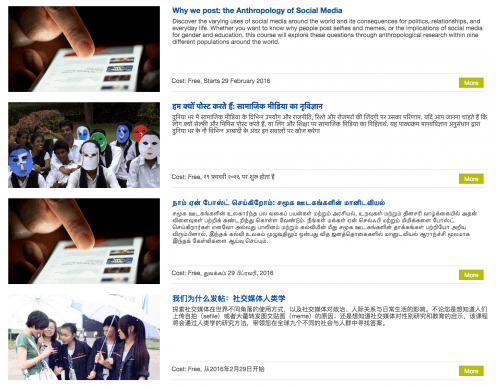
Our course is available in the 7 languages of our fieldsites on UCLeXtend.
If we as a discipline do not value public anthropology highly enough, is it any surprise that the public generally have little time for anthropology? How can it be that a discipline which claims to be global and encompassing in outlook is so limited in its output, often failing to give back to the very communities that it draws knowledge from? We decided to make our e-course and website (including 130 films) available in the seven languages of our fieldsites, and we are in the process of arranging translations of our open access books. The hope is that as public awareness of anthropology grows through such efforts, that there will be more demand for the discipline. As Shriram Venkatraman commented: “our effort is just the start of something big. When there is more recognition from within the field for public outreach and the social impact we can create, this will hopefully encourage many more such efforts which will increase the standing of Anthropology in the eyes of the general public.”
It is heartening to see other efforts towards quality and sustained public anthropology, such as the founding of the Public Anthropology Institute (PAI) at Wesleyan University, and we hope that such initiatives garner wide praise among anthropologists. We have a duty to promote the kind of cultural sensitivity that anthropologists take for granted to as broad an audience as possible, so that people who see cultural difference as a potential source of anxiety, might come to appreciate, and even delight in, the multitude of ways there are to be human.
Thanks to the Why We Post team for sharing their experiences of the public engagement balancing act. Also thanks to our lively panel at IUAES (Berna Yazici, Laura Korčulanin, Miha Poredoš, Aivita Putnina, Branko Banović, Margarita Barrera, Helleka Koppel, and Pascale Hancart Petitet) who continued conversations with me beyond the conference, and who are involved in projects ranging from public art installations of golden excrement in the ‘Give a Sh*t’ project, to an anthropological radio show in Laos.
Filed under Anthropology, Sharing our findings
Tags: anthropology, communication, dissemination, education, ethnography, methodology, public engagement, social media, social networking, Why We Post
Comments Off on Public anthropology: urgent yet undervalued
 Close
Close







